Showing Spotlights 201 - 208 of 544 in category All (newest first):
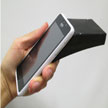 A typical preliminary test for tuberculosis includes culturing the samples for at least 1-2 weeks in a lab, followed by examination under a fluorescence microscope. The lack of rapid, accurate, and inexpensive point-of-care tools for detecting low amounts of M. Tuberculosis is a critical bottleneck in early diagnosis and appropriate treatment. Researchers have now developed a rapid and flexible nano-biosensor for diagnosing TB in early stages using smart phones.
A typical preliminary test for tuberculosis includes culturing the samples for at least 1-2 weeks in a lab, followed by examination under a fluorescence microscope. The lack of rapid, accurate, and inexpensive point-of-care tools for detecting low amounts of M. Tuberculosis is a critical bottleneck in early diagnosis and appropriate treatment. Researchers have now developed a rapid and flexible nano-biosensor for diagnosing TB in early stages using smart phones.
Sep 11th, 2015
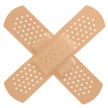 Skin thermal burns are a complex and major source of morbidity, mortality and healthcare expenditure. Given the range of causes, from fire associated injury to water scalding, patients often present with multiple and complex burns - wounds that often worsen and expand over the first few days do to the associated underlying inflammation and injury. To facilitate better wound healing, researchers have developed nanoparticles that can both release the potent biomolecule nitric oxide (NO) over time, as well as facilitate nitrosation, the addition of an NO group to a biological molecule, which is central many of NO's activity.
Skin thermal burns are a complex and major source of morbidity, mortality and healthcare expenditure. Given the range of causes, from fire associated injury to water scalding, patients often present with multiple and complex burns - wounds that often worsen and expand over the first few days do to the associated underlying inflammation and injury. To facilitate better wound healing, researchers have developed nanoparticles that can both release the potent biomolecule nitric oxide (NO) over time, as well as facilitate nitrosation, the addition of an NO group to a biological molecule, which is central many of NO's activity.
Jul 28th, 2015
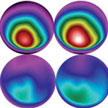 Microwave hyperthermia is one of the most important clinical thermotherapy techniques, however, it is often difficult to apply heat locally to a tumor. By bringing together experts in medicine with experts in nanotechnology, researchers aim to explore the possibilities of designing microwave sensitive agents, which focus the destructive effects of microwaves specifically onto tumor cells. Scientists have now proposed a novel approach to apply micro- and nanomaterials as microwave susceptible agents in tumor hyperthermia in vivo for the first time.
Microwave hyperthermia is one of the most important clinical thermotherapy techniques, however, it is often difficult to apply heat locally to a tumor. By bringing together experts in medicine with experts in nanotechnology, researchers aim to explore the possibilities of designing microwave sensitive agents, which focus the destructive effects of microwaves specifically onto tumor cells. Scientists have now proposed a novel approach to apply micro- and nanomaterials as microwave susceptible agents in tumor hyperthermia in vivo for the first time.
Jun 26th, 2015
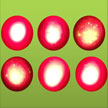 Upconversion luminesce materials are promising for widespread application ranging from optical devices to biodetection and cancer therapy, the near-infrared light excited upconversion materials are attracting much research attention. Researchers have achieved an ultra-strong and ultra-pure red upconversion in erbium and ytterbium co-doped lutetium oxyfluorides through size and morphology control. These nanoparticles, with extremely strong and pure upconversion are promising candidates as novel luminescent reagents for high-contrast bio-imaging and bio-labeling.
Upconversion luminesce materials are promising for widespread application ranging from optical devices to biodetection and cancer therapy, the near-infrared light excited upconversion materials are attracting much research attention. Researchers have achieved an ultra-strong and ultra-pure red upconversion in erbium and ytterbium co-doped lutetium oxyfluorides through size and morphology control. These nanoparticles, with extremely strong and pure upconversion are promising candidates as novel luminescent reagents for high-contrast bio-imaging and bio-labeling.
May 4th, 2015
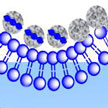 Biomineralization is the formation of inorganic materials in a biological environment, as it is found in bones, teeth and shells. Certain biominerals are also often associated with pathogeneses of tissues. The correlation of the composition of biominerals with pathogeneses of tissues has not been investigated systematically. In new work, researchers examine how the composition of biominerals correlates with the production of inflammatory cytokines associated with the stimulation of intracellular DNA sensors and by biominerals themselves.
Biomineralization is the formation of inorganic materials in a biological environment, as it is found in bones, teeth and shells. Certain biominerals are also often associated with pathogeneses of tissues. The correlation of the composition of biominerals with pathogeneses of tissues has not been investigated systematically. In new work, researchers examine how the composition of biominerals correlates with the production of inflammatory cytokines associated with the stimulation of intracellular DNA sensors and by biominerals themselves.
Apr 22nd, 2015
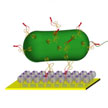 Supramolecular chemistry deals with molecular building-blocks that interact with each other in a dynamic manner, similar to what is seen in nature. Taking advantage of this, several 'smart' materials have been developed for biomedical applications by careful design of these building-blocks. These materials have especially interesting properties like self-healing and responsiveness to light and electricity. Researchers have now explored the possibility of developing a bacterial strain with the ability to interact dynamically with a popular supramolecular building-block.
Supramolecular chemistry deals with molecular building-blocks that interact with each other in a dynamic manner, similar to what is seen in nature. Taking advantage of this, several 'smart' materials have been developed for biomedical applications by careful design of these building-blocks. These materials have especially interesting properties like self-healing and responsiveness to light and electricity. Researchers have now explored the possibility of developing a bacterial strain with the ability to interact dynamically with a popular supramolecular building-block.
Mar 26th, 2015
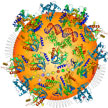 A novel nanoparticle blood test detects an overall increase of human immunoglobulin G (IgG), including the tumor-specific autoantibodies, adsorbed to a gold nanoparticle surface. While this test may not be able to identify the specific type of cancer, it may potentially be able to detect early stage tumor-induced immune responses associated with a broad spectrum of cancer types, making this test potentially a universal screening test for cancer risk assessment.
A novel nanoparticle blood test detects an overall increase of human immunoglobulin G (IgG), including the tumor-specific autoantibodies, adsorbed to a gold nanoparticle surface. While this test may not be able to identify the specific type of cancer, it may potentially be able to detect early stage tumor-induced immune responses associated with a broad spectrum of cancer types, making this test potentially a universal screening test for cancer risk assessment.
Mar 24th, 2015
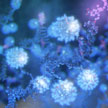 Typically, in clinical formulations of Magnetic Resonance Imaging (MRI) contrast agents, gram quantities of Gd(III) are needed to achieve sufficiently high contrast for examination. That's why the research imaging community is interested in developing new formulations of contrast agents able to bridge the gap between high contrast imaging of contrast agents dosed at low concentrations.
In new work, researchers report a new class of gold nanoconjugates that exhibit exceptionally high relaxivities at both low and high field strengths.
Typically, in clinical formulations of Magnetic Resonance Imaging (MRI) contrast agents, gram quantities of Gd(III) are needed to achieve sufficiently high contrast for examination. That's why the research imaging community is interested in developing new formulations of contrast agents able to bridge the gap between high contrast imaging of contrast agents dosed at low concentrations.
In new work, researchers report a new class of gold nanoconjugates that exhibit exceptionally high relaxivities at both low and high field strengths.
Mar 23rd, 2015
 A typical preliminary test for tuberculosis includes culturing the samples for at least 1-2 weeks in a lab, followed by examination under a fluorescence microscope. The lack of rapid, accurate, and inexpensive point-of-care tools for detecting low amounts of M. Tuberculosis is a critical bottleneck in early diagnosis and appropriate treatment. Researchers have now developed a rapid and flexible nano-biosensor for diagnosing TB in early stages using smart phones.
A typical preliminary test for tuberculosis includes culturing the samples for at least 1-2 weeks in a lab, followed by examination under a fluorescence microscope. The lack of rapid, accurate, and inexpensive point-of-care tools for detecting low amounts of M. Tuberculosis is a critical bottleneck in early diagnosis and appropriate treatment. Researchers have now developed a rapid and flexible nano-biosensor for diagnosing TB in early stages using smart phones.
 Subscribe to our Nanotechnology Spotlight feed
Subscribe to our Nanotechnology Spotlight feed





